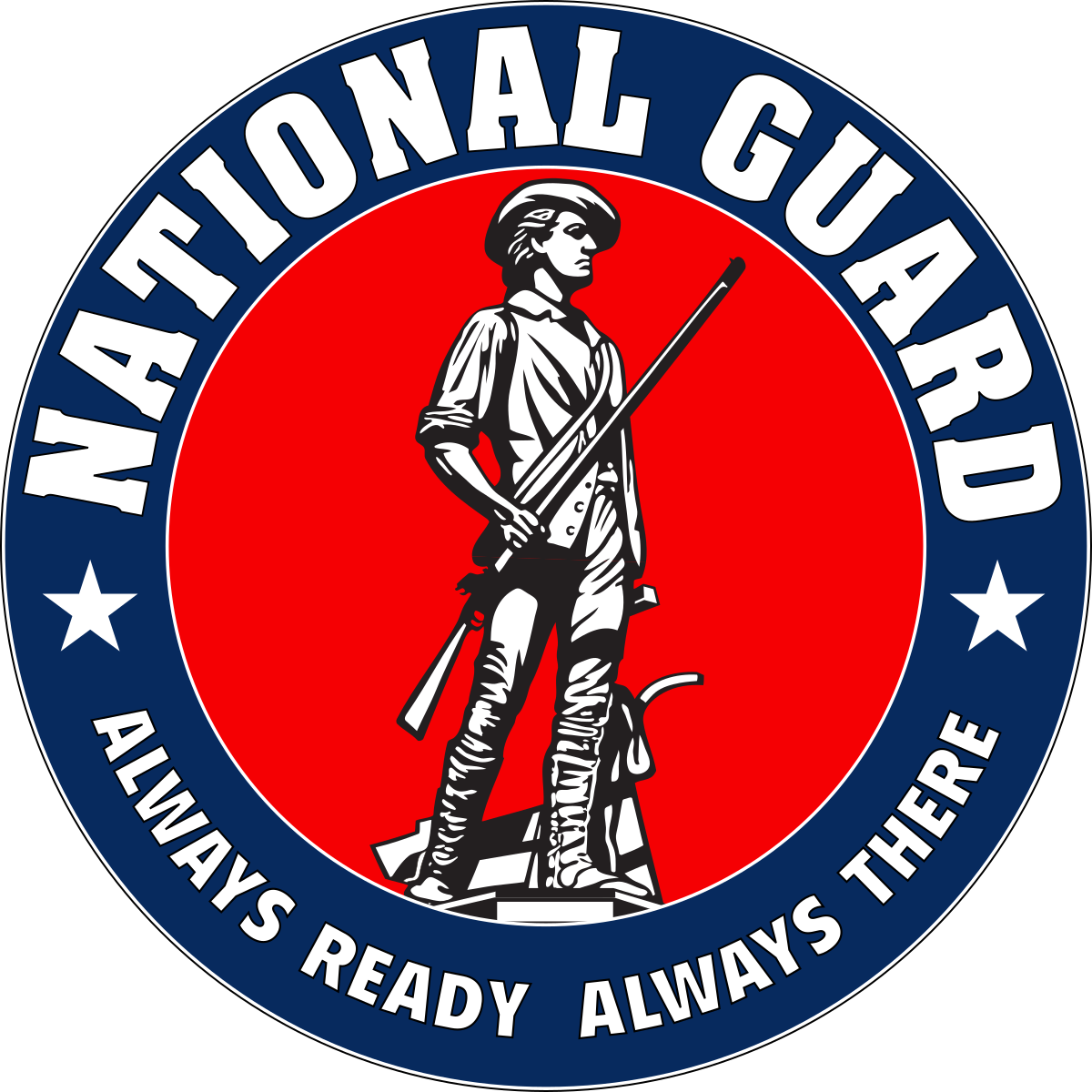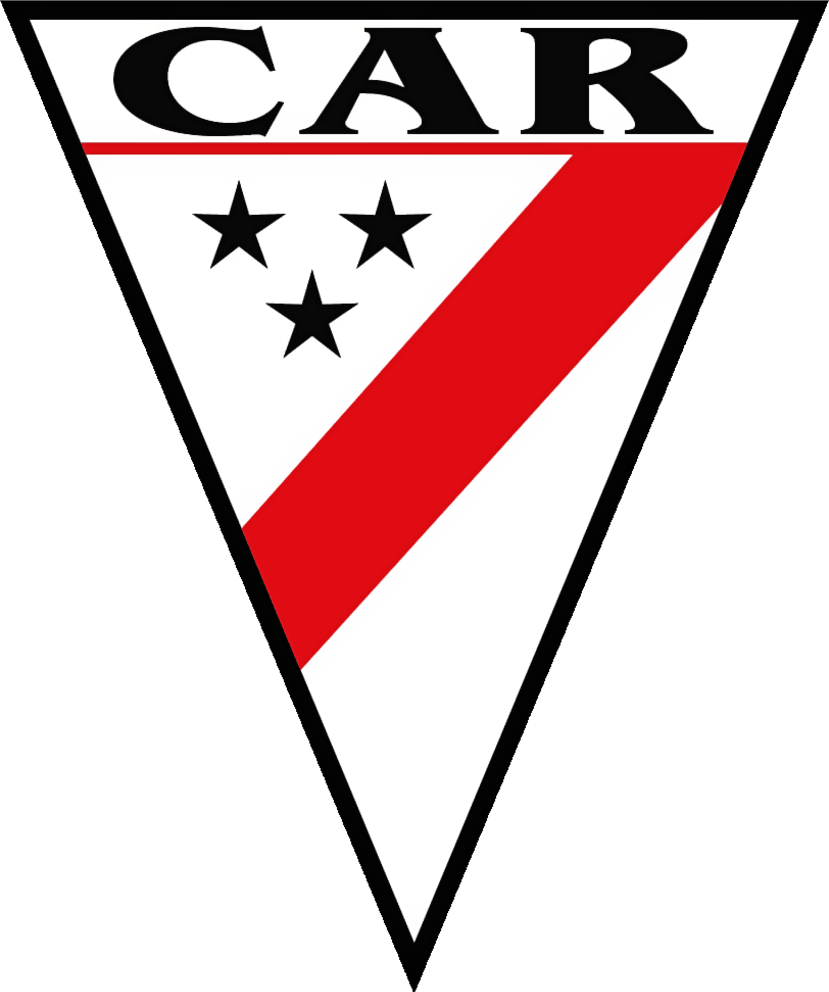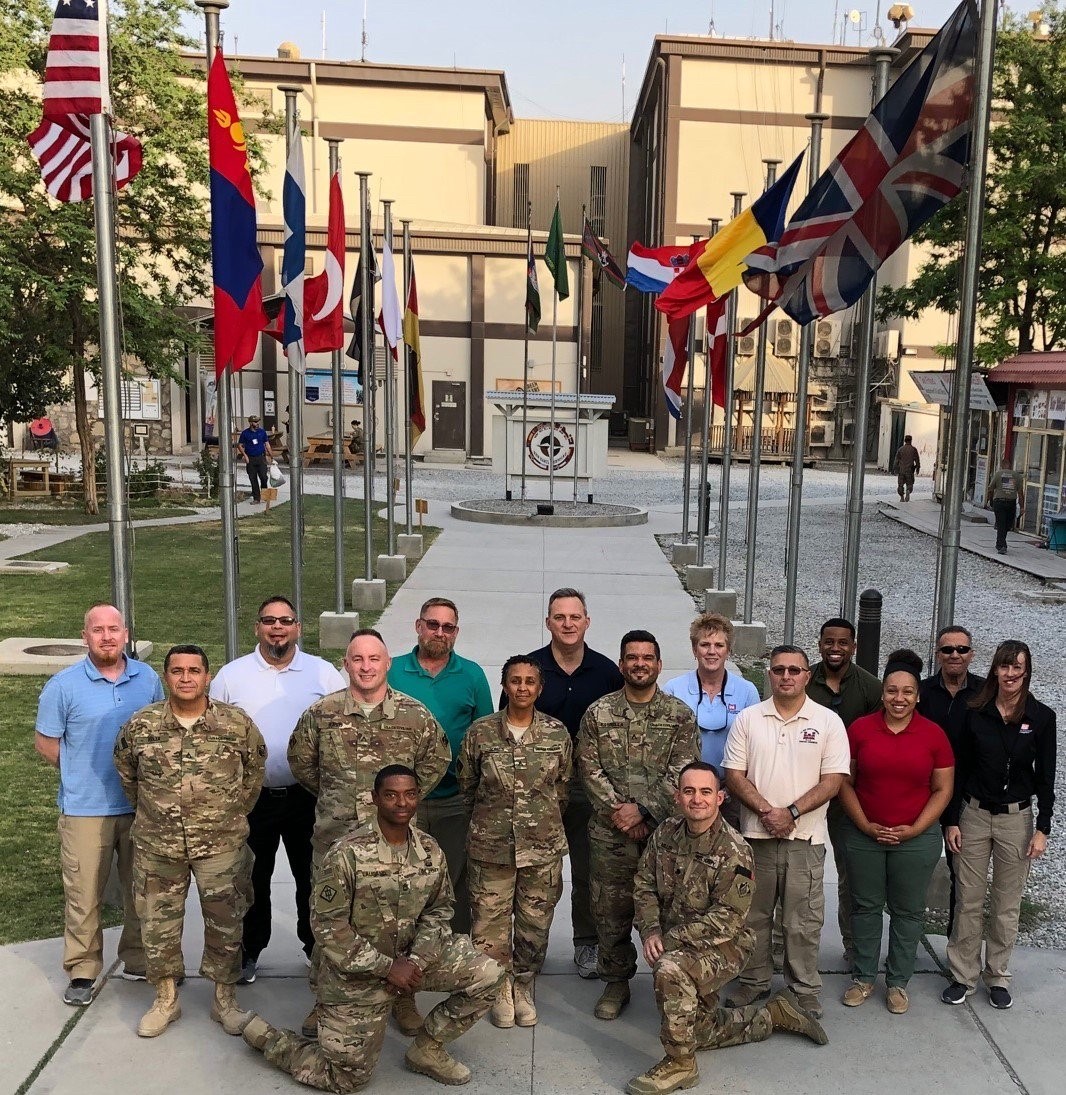Always Ready Always There - This article is about one of the United States Army Reserves. For other countries with national guards, see National Guard. For other United States military reserves, see Reserve components of the United States armed forces.
All 50 US states and US territories, the Commonwealth of Puerto Rico, and the District of Columbia
Always Ready Always There
The National Guard is a state-based military force that is part of the active reserve components of the United States Army and the United States Air Force for federal missions.
Guard Bureau Vice Chief Touts Force, Emphasizes 'always Ready, Always There' > National Guard > Guard News
It is a military reserve force composed of members or military units of the National Guard from each state and territory of Guam, the Virgin Islands, Puerto Rico, and the District of Columbia, consisting of a total of 54 separate organizations. It was formally established under Article 1 Section 8 of Congress's ability to "raise and maintain an Army."
All members of the National Guard are also members of the organized militia of the United States as defined by 10 U.S.C. § 246. National Guard units are under the dual control of the state government and the federal government.
Most National Guard Soldiers and Airmen hold full-time civilian jobs while serving as members of the National Guard.
These part-time Guardsmen are supplemented by full-time Active and Reserve Guard (AGR) personnel in the Army National Guard and Air National Guard, plus Army Reserve Technicians in the Army National Guard and Air Reserve Technicians (ART) in the Air National Guard. .
Always Ready, Always There And Always Forward > Transatlantic Division Public > News Stories
The National Guard is a joint activity of the United States Department of Defense (DoD) consisting of components of the United States Army Reserve and the United States Air Force: the Army National Guard.
Local militias were formed from the first colonization of America in 1607. The colony's first militia was formed by Massachusetts in 1636, combining old small local units, and some National Guard units can be traced to these militias. When the United States became independent, various colonial militias became state militias. The title "National Guard" was used by several New York State militia units in 1824, which was named after the Marquis de Lafayette in honor of the French National Guard. "National Guard" became the national militia standard in 1903 and specifically referred to reserve forces under mixed state and federal control since 1933.
The first militia force in what is now the United States was formed on September 16, 1565 in the newly established Spanish military town of St. Augustine. The militia was assigned to guard the expedition's supplies while its leader, Pedro Mendez de Aviles, led regular troops north to attack the Frech settlement at Fort Caroline on the Saint River.
This Spanish militia tradition and its gilt-edged tradition that developed in the north provided the core of colonial defense in the New World.
National Guard Troops Deploy To Southern U.s. Border > Joint Chiefs Of Staff > News Display
The militia tradition continued with the first permanent settlements in the New World. Jamestown Colony (founded in 1607) and Plymouth Colony (founded in 1620) both had militias, originally composed of every able-bodied adult male. By the mid-1600s, each town had at least one militia company (usually commanded by an officer with the rank of captain), and a militia company from a district formed a regiment (usually commanded by an officer with the rank of major in the 1600s. or colonel in the 1700s).
From its founding until the early 1900s, the United States maintained a minimal military, relying on state militias directly related to former colonial militias to provide the majority of its forces.
As a result of the Spanish-American War, Congress was asked to reform and regulate the training and qualification of the state militia.
In 1903, with the passage of the Dick Act, the forerunner of the modern National Guard was formed. This required the states to divide the militia into two parts. The Act proposed the title "National Guard" for the first division, known as the Organized Militia, and "Reserves" for the rest.
Nina Chanel Abney, Always Ready, Always There, 2018
During World War I, Congress passed the National Defense Act of 1916, which mandated the term "National Guard" for state militias and further organized it. Congress also authorized the states to maintain a Home Guard, a reserve force outside of the National Guard commissioned by the federal government.
In 1933, with the passage of the National Guard Mobilization Act, Congress completed the split between the National Guard and traditional state militias by ordering all troops to be federally funded, thus becoming the National Guard and National Guard. . From the United States, the newly established Federal Reserve Force. The National Defense Act of 1947 created the Air Force as a separate branch of the armed forces and simultaneously created the United States Air National Guard as a reserve component, mirroring the structure of the Army.
The National Guard of several states, territories, and the District of Columbia are part of the United States' first line of defense.

State National Guards are organized into units assigned to each of the 50 states, three territories, and the District of Columbia, and operate under state or territory governors, except in Washington, D.C., where the National Guard is under It works. The President of the United States or his designee. Governors exercise control through their government assistants.
Hokanson: Names In Bronze One Of The Reasons The National Guard Keeps Our Promise To Be Always Ready, Always There > Air National Guard > Article Display
The National Guard may be called to active duty by the governor to help respond to domestic emergencies and disasters such as hurricanes, floods, and earthquakes.
The National Guard is managed by the National Guard Bureau, which is a joint activity of the Army and Air Force under the Ministry of Defense.
The National Guard Bureau also provides training and funding policies and requirements for the Army National Guard and state Air National Guard units.
And other administrative responsibilities provided under 10 U.S.C. § 10503. The National Guard Bureau is headed by the Chief of the National Guard Bureau (CNGB), who is a four-star general.
Always Ready 2021 Third Kit
The National Guard is headquartered in Arlington County, Virginia, and is a joint Department of Defense activity for all administrative affairs of the Army National Guard and Air National Guard. The chief is an officer of the army or air force with four stars and the uniform of a National Guard officer and a member of the Joint Staff of the Army. In this position, he is the military advisor to the President, the Minister of Defense, the National Security Council and the official channel of communication between the Ministry of Defense and the Governor and the Adjutant General in all matters related to the National Guard. He is responsible for ensuring that more than half a million Army and Air National Guard personnel are available, capable and ready to protect the homeland and provide combat resources to the Army and Air Force. He was appointed by the president as the commander in chief.
Each country's National Guard is authorized by the United States Constitution. As originally drafted, the Constitution recognized the existing state militia and assigned it an important role: "to execute the laws of the Union, suppress insurrections, and repel invasions." (Article 1, Clause 8, Clause 15). The Constitution distinguishes "militia," which are the state itself, from "armies," which it is illegal for a state to maintain without congressional approval. (Article 1, paragraph 10, paragraph 3). Under the Cretan Act, the National Guard and related state defense forces are provided to the state by Congress and are called the "army". 32 United States § 109.
Although originally a state, the "militia of the several states" constitution did not end because it could be federalized. According to Article 1, Section 8; Section 15 authorized the Congress of the United States to enact laws to "call out the militia to enforce the laws of the Union, to prevent insurrections, and to repel invasions." Congress shall also have power to make instructions for the organization, arming, and discipline of the militia, and for regulating the parts which may be employed in the service of the United States, appointing officers, and officers, respectively. for the training of the militia according to the course provided by Congress” (Sec. 16). The President of the United States is the commander-in-chief of the state militia "called into the actual service of the United States." (Article II, Section 2).

The traditional state militia was redefined and recreated as an "organized militia"—the National Guard—through the Militia Act of 1903. They are now increasingly under federal control, including having weapons and equipment provided by the federal government. budget, and much closer relations with the regular army.
Protecting Democracy At A Moment's Notice
The Army National Guard and Air National Guard are expected to meet the same moral and physical standards as their "full-time" and "part-time" Federal Reserve counterparts.
The same ranks and insignia as the United States Army and United States Air Force are used by the Army and Air National Guard.
Always there care bear, always ready greg bahnsen, always there senior care, always there home care, always there care agency, always there, always there care, always there bear, always ready, there is always hope, always there health care, always itchy down there

0 Comments